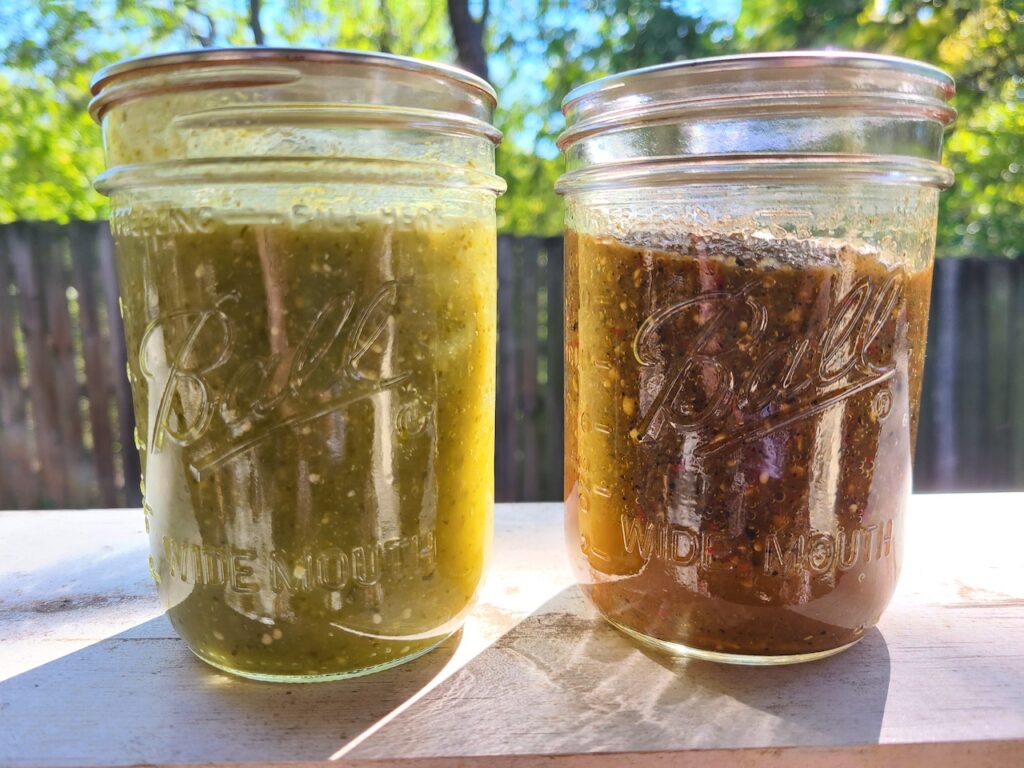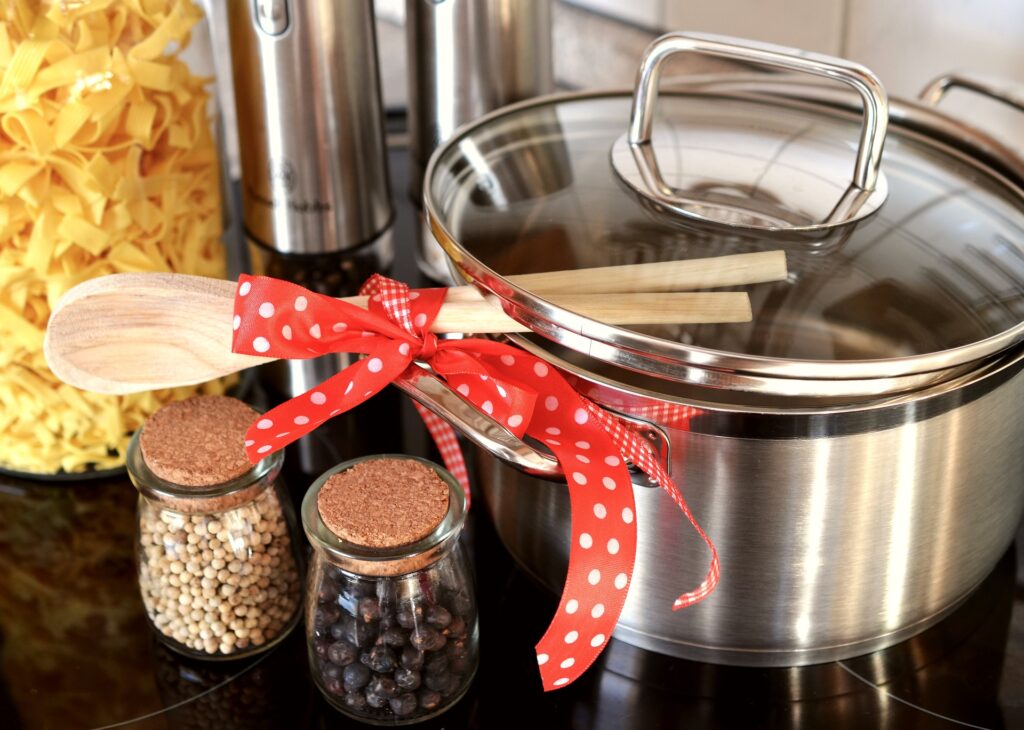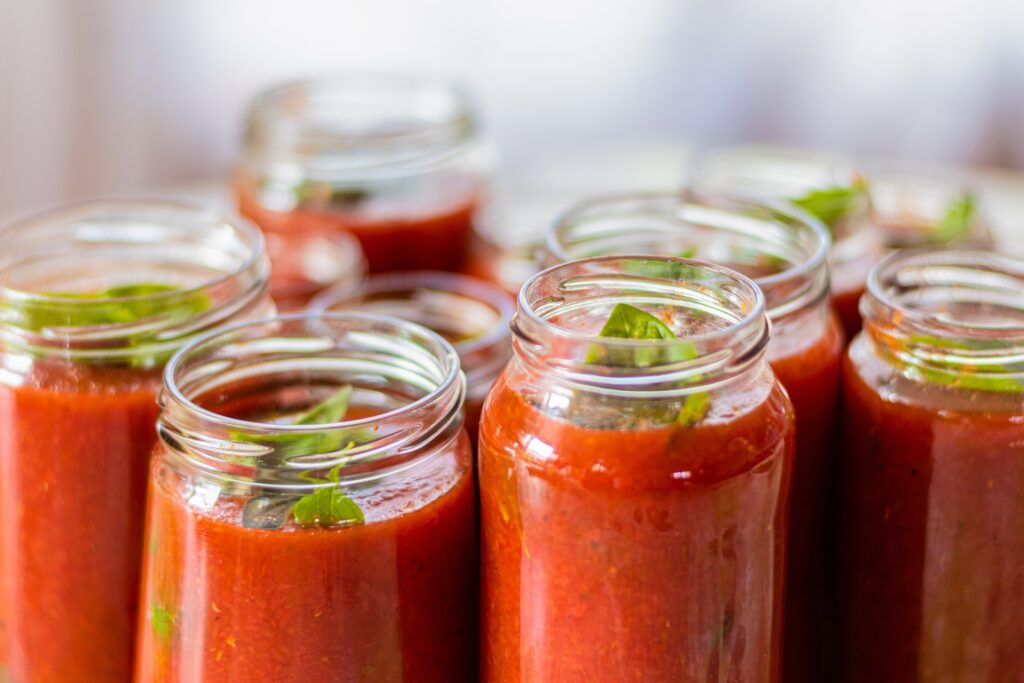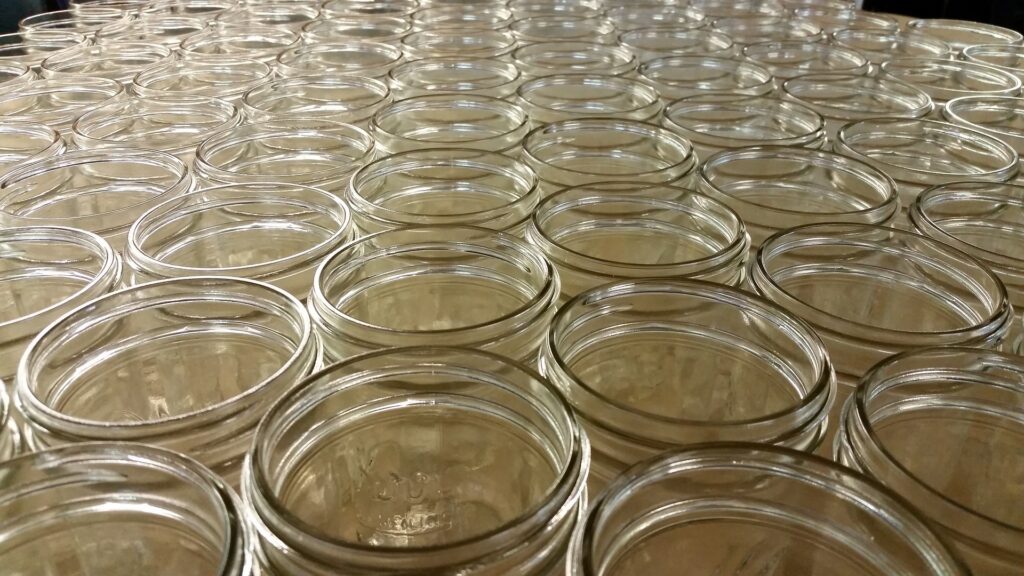A general synopsis of canning basics with materials, methods, safety guidelines, and frequently asked questions.
What are the Basic Canning Materials that I need?
- Funnel – large mouth, plastic or stainless steal
- Glass Jars – various sizes for different needs
- Lids – different sizes for different jars
- Rings or Bands – different sizes for different jars
- Canner (big pot) or Pressure Canner
- Canning rack – metal or wood rack to allow jars to sit off the bottom of canner pot
- Jar Lifter – tongs that are specialized for jars
- Ladle for filling jars – stainless steel, plastic, or wood
- Timer
- Labels
- Clean towels – cotton is best, to dry and place hot jars on
- Paper towels – to clean rims of jars

Various Terms in Canning
Headspace: amount of empty space needed at the top of the jar when filling. Typically, ½ inch to 1 inch depending on recipe
Water Bath: the water surrounding the jars in a water bath canning scenario. Use for canning high acid or high sugar foods (pickles, tomatoes, jams)
Pressure Canning: a pressurized pot for canning low acid foods (meat, vegetables)
Finger-Tight: screwing on the band with only your hands
Processing Time: time needed to pressurize jars to ensure bacteria is killed and food can be stored
What are the types of Canning?

Pressure Canning
Pressure canning involves a large, pressurized pot with a locking lid and pressure gauge. A rack is placed on the bottom, and a small amount of water. Then, your filled jars are placed inside (not touching each other), and the lid is sealed. Each recipe will have specific processing times and pressure needs.
This method of canning is best for low acid foods like meats, poultry, seafood, potatoes, and most vegetables. With the use of high pressure, the food can be cooked up to 240F to prevent botulism and other bacteria from growing.
Several new home canners find pressure canning to be a daunting task. However, there are a lot of resources out there for pressure canning. Be sure to follow the instructions that come with your canner.
Water Bath Canning
Water bath canning also involves a large pot; however, it is not pressurized. The large pot has a rack placed on the bottom and is filled with water until 1 or 2 inches above the jars inside. Again, jars need to be separated so they are not touching each other. The water is then boiled or simmered for different processing times based on the recipe.
This method of canning is great for high acid foods like jams, jellies, salsa, pickles, relish, and chutneys.
Home canners have been water bath canning for centuries.
Atmospheric Steam Canning
Atmospheric steam canning is similar to water bath canning, because it is for high acid foods. A shallow and wide pot with a rack is filled with a few inches of water. The jars are then placed on the rack and a large pot is placed on top to seal like a lid. The hot steam from the simmering water creates the high heat temperatures needed to safely can the food.
This method of canning is newer and requires less water than other methods.

Unsafe Canning Methods
Open Kettle Method
The open kettle canning method involves pouring hot food into hot jars and adding a lid to seal. This method is not recommended as foods do not reach a temperature high enough to kill some molds and bacteria.
Oven Processing
Oven processing involves placing glass jars in the oven and baking them to temperature. This method is considered unsafe as the jars may explode or break upon contact.
The Sun
Canning by using the sun is like the open kettle method. The food will not reach the proper temperature to maintain food safety standards.
Safety and Food Guidelines
Follow instructions for canning recipes that have been tested. I like using the Ball Book of Canning and Preserving. Or you can visit the Ball Mason Jar Website for recipes here https://www.ballmasonjars.com/recipes?fdid=recipes
If using your own recipe, find one that is similar and follow those instructions.
Always be sure to sterilize your jars before adding any food. This involves washing the jars, bands, and lids with hot soapy water and allowing them to air dry. Jars are then placed into boiling water before food is added.

Signs of spoiled food
- Broken seal
- Mold
- Gassiness
- Cloudiness
- Spurting liquid
- Bubbles rising in jar
- Seepage
- Yeast growth
- Fermentation
- Slime
- Disagreeable color
Acidity of Foods
High Acid
High acid foods are considered foods below pH 4.6. These are typically fruits, tomatoes, and pickled foods.
Low Acid
Low acid foods are considered foods above pH 4.6. These are typically meats, poultry, most vegetables, potatoes, and dairy products.
Choosing the Right Jars for Canning
When choosing a jar to can with, consider the portion in which you eat that food, or how fast you can consume one jar.
Half pint: 8oz or 1 cup; good for condiments, and jellies
Pint: 16oz or 2 cups; good for salsas, jellies, chutneys and marinades
Quart: 32oz or 4 cups; good for pickles, most vegetables, stews, potatoes, milk, and more
Half gallon: 76oz or 8 cups; good for juices and vinegars

How to Can – The Basics
- Sterilize lids, jars, rings, and canning equipment
- Make the recipe of what you want to can
- Take clean, sterile jars and place them on wooden cutting board or towels. Fill the jars
- Leave headspace described in recipe and release any air bubbles.
- Clean mouths of jars with paper towels and apply lids and rings.
- Can jars in method described in recipe.
- Remove jars using jar lifter and place on wooden cutting board or towels to cool.
- Test for proper seal (button will be secured down)
- Once cooled, label and store for later consumption.
Frequently Asked Questions in Canning Basics
What happens if food is not canned properly?
In general, when food is not canned properly, the bacteria naturally present in the food will multiply and spoil the food. Therefore, resulting in food poisoning to the consumer, and waste of the product.
What type of jars are best for canning?
Mason jars, or jars that can be made airtight are the best jars for canning. Containers and jars that cannot be made airtight, or that cannot withstand high heat are not recommended for canning.
Do you have to cook before canning?
Food does not need to be cooked before the canning process. However, if desired, food can be cooked before canning to speed up later cooking times. For example, pre-cooking stew, canning it, and then warming it up when ready to eat.
How do I know if my jar is sealed?
The lid of the jar will be secured down and there will be a concave section of the lid. This is called the button. The button will be firm and will not make any noise if pressed down.
How long does canned food last?
If food is canned correctly, it will last 1 year or longer. However, it is recommended to consume canned food within one year to decrease risk of food borne illness.
Do I need to leave the rings on my jars?
Rings are added to jars in the canning process to secure the lid. Once the process is complete and jars have cooled. Rings should be removed to ensure a proper seal has formed on the jar.
Other Resources
National Center for Home Food Preservation or NCHFP https://nchfp.uga.edu/how/general.html
Free USDA Complete Guide to Home Canning, broken into Intro and 7 Guides.
Recent Posts
In general, to harvest your own seeds, you must choose mature, healthy plants, allow seeds to dry out, and remove the seeds when they are completely dry. However, this process will look different for...
A guide on how to store and organize seeds for your garden. Vegetables, flowers, herbs, or anything you are wanting to grow. How to Store Your Seeds Proper storage of garden seeds is essential...
